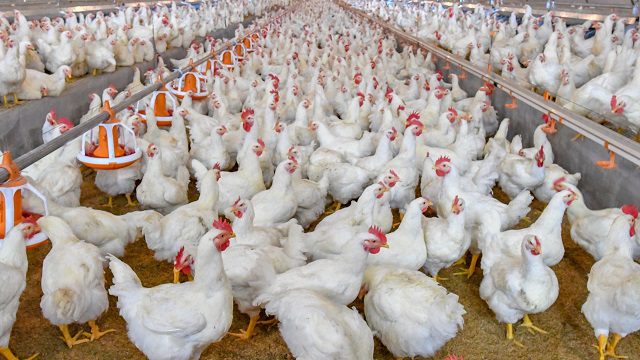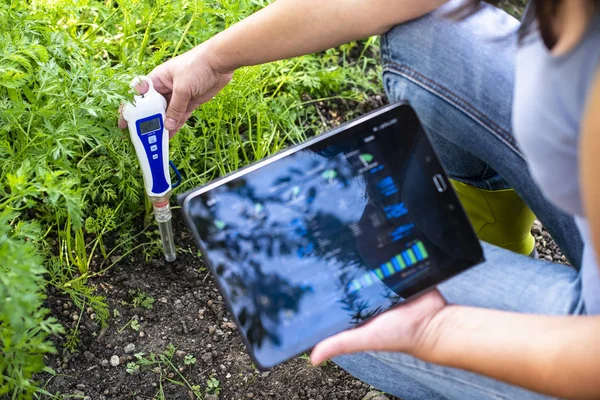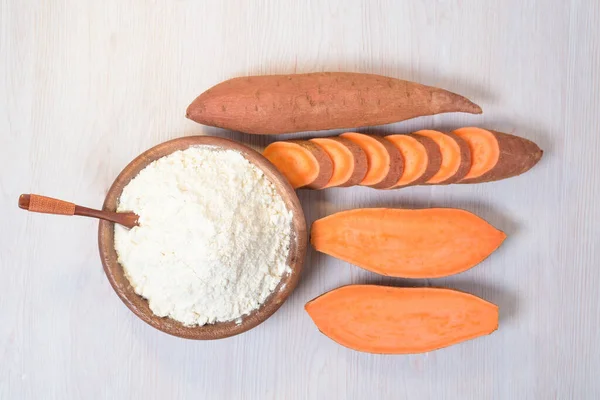Are you interested in starting or expanding your broiler chicken farm?
Broiler farming in Kenya is one of the most profitable agribusiness ventures. With a growing demand for chicken meat in hotels, restaurants, supermarkets, and homes, investing in broilers can generate high returns within a short period.
This guide will walk you through everything you need to know as a beginner—from setup and management to cost estimates and profit potential.
Table of Contents- Jump to Section
Why Invest in Broiler Farming?
Broiler chickens are raised specifically for meat production. They grow fast, reaching market weight in just 6-8 weeks. Compared to layers or indigenous chicken, broilers require less time to mature, making them a great choice for farmers looking for quick returns.
Advantages of Broiler Farming in Kenya
- High Market Demand: Chicken meat is widely consumed as a healthier white meat making broilers a hot-selling product.
- Quick Returns: With a short growth cycle, farmers can make profits multiple times a year.
- Scalability: You can start with a small flock and expand as your business grows.
- High Feed Conversion Efficiency: Broilers grow rapidly with the right feed and management.
How to Start Broiler Farming in Kenya (Step-by-Step Guide)
Commercial broiler farming requires proper planning and execution to ensure success.The steps below will give you the hidden tips that make meat chicken farming successful.
Step 1: Market Research
Before you invest a single shilling, take time to understand the market. The more you know about your customers, pricing trends, and competition, the higher your chances of running a successful and profitable broiler farm. Below are the four things to consider in your feasibility analysis.
1. Customers – Who to sell to
Forget the big retailers for a moment. Your biggest customers might be right around the corner. Visit your local market, walk through the butcheries, and chat with mama mbogas who sell chicken. Share the following information
- ✅ What size of broilers do their customers prefer—big, medium, or small?
- ✅ Do people buy more live birds, dressed chicken or kuku choma?
- ✅ What price point moves the fastest?
💡 Pro Tip: If most customers in your area prefer live birds, investing in slaughtering and packaging might not be necessary at the start. But if dressed chicken sells better, you’ll need to factor in processing costs.
2. Market – Where to Sell
Nairobi is a massive market, but competition is fierce. Consider selling in other fastest growing markets like Ruiru, Nakuru, Eldoret, Kisumu, or even rural towns like Meru, Kitengela and Nyeri? Many towns rely on Nairobi for chicken supply, yet demand is growing locally.
To get a competitive edge:
- 🔍 Research broiler prices in different towns. A slight difference in demand can mean better profits elsewhere.
- 🚛 Consider partnering with local traders who supply chicken to smaller markets.
- 🎯 If you go retail, set your kuku choma joint at high-traffic areas like roadside eateries, fast-food joints, and institutions (schools, hotels, hospitals).
3. Price-How Much to Sell
A broiler that sells for KSh 500 today might go for KSh 650 in December. Why? Demand spikes during festive seasons, school holidays, and special occasions like weddings and Ramadhan.
Before you start, track these trends:
- 📈 Check broiler chicken prices in Kenya over the past year.
- 🗓️ Time your production so your birds are ready during peak demand.
- 💰 Plan ahead—feed costs also rise when demand increases, so stock up early.
4. Consult- Seek Advice
Nothing beats real-world experience. Talk to successful chicken farmers who have been in the broiler business for years. They can give you insights you won’t find on Google:
- 🗣️ Best suppliers for quality chicks at good prices.
- 🛑 Common mistakes that lead to losses.
- 📍 Ideal locations to sell your birds faster.
💡 Pro Tip: Farmers blogs, Facebook pages and YouTube channels have free information that can save you from struggling.
Market Research = Smarter Farming
The worst mistake you can make as farmer, is assuming that you will sell your chickens easily. In reality, broiler farming is just like any business—you need to understand your customers, their preferences, and the best way to reach them.
Step 2: Set Up your Broiler Farm
Before purchasing your chicks, you need a proper setup to ensure their health and growth. Broilers need a comfortable and secure environment to grow efficiently. Here’s what you need in terms of housing and equipment.
1. Housing and Infrastructure
Broilers require a well-ventilated, lit, clean, and secure house to prevent diseases and promote fast growth. Here’s what to consider:
- 🏠 Space Requirement: Cramped birds are stressed birds, and stressed birds are more susceptible to disease. Aim for that sweet spot of 10-12 birds per square meter or Allocate at least 1 square foot per chick to avoid overcrowding.
- 🔥 Temperature Control: Use heating systems like infrared bulbs or charcoal jikos to maintain warmth for young chicks.
- 💨 Ventilation: In Kenya’s climate, good ventilation is essential for preventing diseases and keeping your birds comfortable. Ensure the house has proper airflow to prevent respiratory diseases.
- 🛑 Biosecurity and safety: Limit farm visitors, disinfect regularly, and place footbaths at entrances. In addition, Jackals, stray dogs, even birds of prey can decimate your flock. Invest in strong fencing and secure your housing with a lock.
2. Essential Equipment
You’ll need the following equipment to run a successful broiler farm:
- Feeders and drinkers Automatic or manual feeders and drinkers for providing food and water.
- Brooder lamps Infrared lamps or charcoal jikos for warmth for the 1st 2 weeks.
- Litter materials like wood shavings or saw dust to keep the floor dry.
- Weighing scale to monitor growth, weigh food and determine market weight.
💡 Pro Tip: Keep chicks at 32-34°C in their first week to prevent mortality.
Step 3: Sourcing Broiler Chicks
Your entire broiler farming success starts with the chicks you buy. A poor-quality batch can mean slow growth, high mortality, and losses. That’s why sourcing from a reputable supplier isn’t just an option—it’s a must.
1. Buy from Reputable Hatcheries
Not all chicks are created equal. Some suppliers sell weak, poorly vaccinated chicks that struggle to grow, leaving you with high feed costs and disappointing profits. To avoid this, always buy from trusted, well-established hatcheries like:
- ✔ Kenchic – The industry leader, known for high-quality broiler breeds and strict vaccination programs.
- ✔ Muguku – A pioneer in poultry farming with consistent quality.
- ✔ Kukuchic – Another reliable hatchery supplying strong, fast-growing broilers.
💡 Tip: Be wary of roadside sellers or unverified suppliers offering “cheap” chicks. What you save in the short term, you’ll lose in slow growth and high mortality.
2. Choose Right Broilers Breeds
Broilers aren’t one-size-fits-all. Different breeds have slight variations in:
✅ Growth rate – Some reach market weight in 5 weeks, others take longer.
✅ Feed conversion ratio – The best breeds need less feed to gain more weight.
✅ Disease resistance – Some breeds handle local conditions better than others.
📌 What to do?
- Ask farmers in your area which broiler breed performs best under your climate.
- If possible, buy from a hatchery that offers vaccinated, high-performing broilers bred for efficiency.
3. Why Kenchic Broilers are the best
Kenchic dominates Kenya’s poultry industry, and for good reason. They offer:
🐥 Strong genetics – Their broilers grow fast and have good meat yield.
💉 Strict vaccination programs – Their chicks arrive already vaccinated against common diseases.
📊 Reliable customer support – Kenchic offers guidance on feeding, disease control, and broiler management.
💡 Tip: If you’re sourcing from Kenchic, understand their breed types, pricing structure, and vaccination schedule. This will help you plan your feeding and health management properly.
Quality Chicks = Profitable Farming
Never compromise when sourcing chicks. A strong start means faster growth, lower mortality, and better profits. Always buy from reputable hatcheries, choose the right breed, and make sure your chicks arrive healthy and vaccinated. Cutting corners here will cost you in the long run!
Step 5- Brooding and Early Care
The first 14 days of a broiler chick’s life are the most crucial. If you get brooding right, your birds will grow fast, stay healthy, and convert feed efficiently. Get it wrong, and you’ll struggle with weak birds, diseases, and losses.
1. Temperature Control
Chicks can’t regulate their body temperature, so you must provide the right warmth.
🔥 Ideal Temperature Guide:
✔ Days 1-7: Maintain 32-35°C to keep chicks warm.
✔ Days 8-14: Gradually reduce to 28°C, ensuring birds adapt slowly.
💡 Pro Tip: Watch chick behavior!
- Huddled together? They’re cold—raise the temperature.
- Spreading far apart? They’re too hot—reduce the heat.
- Evenly spread out? Perfect conditions!
2. Proper Lighting
Broilers grow best with 24-hour lighting in the first two weeks. This keeps them active, encourages feeding, and improves weight gain.
💡 Pro Tip: Use dim white or red bulbs to avoid excessive brightness, which can cause stress.
3. High-Quality Starter Feed
Feed is your biggest cost in broiler farming, and early nutrition determines final weight. A good starter feed should have:
✅ At least 22-24% protein for fast muscle growth.
✅ Balanced vitamins and minerals to support bone development.
✅ Easily digestible ingredients to help chicks absorb nutrients quickly.
💡 Pro Tip: Stick to trusted brands like Unga Farm Care, Sigma Feeds, Pembe Feeds, or Chick Master.
4. Clean Water with Vitamins
Water isn’t just for hydration—it’s a growth booster. Make sure chicks have continuous access to clean, fresh water, preferably supplemented with:
✅ Vitamins & electrolytes to reduce stress and improve immunity.
✅ Glucose in the first 24 hours to give them energy.
💡 Pro Tip: Change water regularly to prevent infections, and use nipple drinkers instead of open trays to keep it clean.
Strong Start = Big Profits
The first two weeks determine everything—growth, feed efficiency, and survival. Focus on temperature, lighting, feed quality, and clean water to give your broilers the best start. A well-brooded chick turns into a fast-growing, profitable broiler!
Step 6: The Broiler Feeding Program
Feed is the biggest expense in broiler farming, making up about 70% of production costs. If you want fast growth, high-quality feed and proper feeding schedules are non-negotiable.
1. Quality Over Quantity
Broilers are bred to grow fast, but only if they get the right nutrients at each stage. Don’t cut corners with low-quality feeds—you’ll lose money in slower growth, poor weight gain, and higher mortality.
🔹 Use trusted feed brands like Unga Farm Care, Pembe, Isinya Feeds, Sigma Feeds, and Chick Master.
🔹 Avoid feed wastage! Use proper feeders and adjust them as chicks grow.
2. Homemade vs. Commercial Feed
Some farmers try homemade broiler feed to cut costs. While it’s possible, it requires careful formulation to balance protein, energy, vitamins, and minerals.
💡 Thinking of making your own feed?
✅ Source quality ingredients like maize germ, sunflower cake, soya meal, and fish meal.
✅ Get a qualified animal nutritionist to help with the formula.
✅ Test performance—your homemade feed should match or exceed commercial results.
3. Fresh and Clean Water
Broilers need constant access to clean, fresh water—it directly impacts feed digestion, metabolism, and weight gain.
💡 Pro Tip:
✔ Use nipple drinkers to keep water clean and reduce disease risks.
✔ Add vitamins and electrolytes (like Vitalyte or Broiler Booster) to reduce stress and improve immunity.
✔ Always provide lukewarm water—cold water can slow digestion and growth.
4. Broiler Feeding Program
Below is a practical feeding guide based on age and feed type:
- Day 1-14: Starter feed is provided during this period.
- Day 15-28: Transition to Grower feed, with the following ratios:
- Day 11: Start changeover from Starter to Grower feed at a 25:75 ratio.
- Day 12: 50:50 ratio.
- Day 13: 75:25 ratio.
- Day 14: Change to 100% Grower feed.
- Day 29 to Slaughter: Finisher feed is introduced, with the following ratios:
- Day 25: Start change from Grower to Finisher feed at a 25:75 ratio.
- Day 26: 50:50 ratio.
- Day 27: 75:25 ratio.
- Day 28: Change to 100% Finisher feed.
💡 Pro Tip: Use crumbs for young chicks (easier digestion), then switch to pellets for better feed conversion and faster growth.
Feeding Right = Bigger Birds, Bigger Profits
Want 2 kg+ broilers in just 6 weeks? Stick to a strict feeding plan, use high-quality feeds, and never compromise on water quality. Remember: Your profits start with what you feed
Step 7: Vaccination and Disease Control
In broiler farming, disease outbreaks can wipe out your entire flock in days. Prevention is cheaper than treatment, and a proper vaccination program is non-negotiable for healthy, fast-growing birds.
1. Broiler Vaccination Schedule
A well-vaccinated flock is a profitable flock. Below is the standard broiler vaccination schedule in Kenya:
| Age (Days) | Vaccine | Administration Method |
| Day 1 | Marek’s Disease | Given at hatchery |
| Day 7 | Newcastle + Gumboro | Drinking water |
| Day 14 | Gumboro Booster | Drinking water |
| Day 21 | Newcastle (Booster) | Drinking water |
💡 Pro Tip: After vaccination, add electrolytes and multivitamins (like Vitalyte or Broiler Booster) to drinking water. This helps reduce vaccine stress and keeps birds hydrated.
2. Biosecurity Measures
Prevention is better than cure! Biosecurity measures protect your broilers from deadly infections.
- ✅ Control farm access – Limit visitors and disinfect footwear before entry.
- ✅ Keep everything clean – Disinfect feeders, drinkers, and the chicken house regularly.
- ✅ Quarantine new or sick birds – Isolate them to prevent spreading disease.
- ✅ Control rodents and insects – They carry viruses and bacteria that infect chickens.
3. Common Broiler Diseases in Kenya
Broilers in Kenya are most vulnerable to diseases in the table below. Besides, you will learn key signs to look for and the prevention and treatment measures.
| Disease | Signs | Prevention |
|---|---|---|
| 🔹Newcastle Disease | Twisted neck, breathing issues, sudden death | Vaccination at Day 7 & 21 |
| 🔹Gumboro (Infectious Bursal Disease) | Weakness, diarrhea, swollen bursa | Vaccination at Day 7 & 14 |
| 🔹Coccidiosis | Bloody diarrhea, weight loss, ruffled feathers | Keep bedding dry, use anticoccidial drugs like Amprolium |
| 🔹Chronic Respiratory Disease (CRD) | Sneezing, nasal discharge, slow growth | Good ventilation, antibiotics under vet supervision |
A Healthy Flock = Bigger Profits!
Want to avoid unnecessary losses? Stick to the vaccination schedule, enforce biosecurity, and act fast at the first sign of illness. Remember: healthy chickens grow faster and fetch better prices!
Step 8: Record Keeping
Successful broiler farming isn’t just about feeding and waiting; it’s about tracking progress and making data-driven decisions. By keeping accurate farm records, you can identify problems early, improve efficiency, and maximize profits.
1. Broiler Growth Cycle & Timeline
Your broilers follow a structured growth cycle. Stick to this timeline for best results:
- 📅 Week 1: Warm brooding environment, starter mash, first vaccinations.
- 📅 Weeks 2-3: Transition to grower mash, close monitoring, and strict hygiene.
- 📅 Weeks 4-5: Rapid weight gain on finisher mash, final vaccinations.
- 📅 Week 6: Market-ready broilers! Time to sell and cash in.
2. Weigh Your Birds Growth Rate
📌 A healthy broiler should gain weight consistently. Weigh a sample of birds at least twice a week and compare the results against standard growth rates.
| Age (Weeks) | Average Weight (kg) |
| Week 1 | 0.2 – 0.25 kg |
| Week 2 | 0.6 – 0.7 kg |
| Week 3 | 1.2 – 1.3 kg |
| Week 4 | 1.8 – 2.0 kg |
| Week 5 | 2.5 – 2.8 kg |
| Week 6 | 3.0 – 3.5 kg |
💡 Pro Tip: If birds are underweight, check for feed quality issues, water supply problems, or disease symptoms.
3. Observe Behavior
Your broilers can’t talk, but they show signs when something is wrong. Watch for:
❌ Lethargy – Birds sitting still for long periods may be sick.
❌ Ruffled Feathers – A sign of stress, illness, or parasites.
❌ Reduced Appetite – Could indicate disease or poor-quality feed.
❌ Irregular Drinking – Dehydration affects growth; ensure constant clean water.
4. Keep Detailed Farm Records
Great farmers don’t guess—they analyze. Keep records of:
✅ Feed Consumption – How much feed is used daily/weekly?
✅ Weight Gain – Is your flock growing at the expected rate?
✅ Mortality Rate – If birds are dying, what’s causing it?
✅ Vaccinations & Treatments – When and what medication was given?
Good Records = Better Profits!
By tracking everything, you’ll know what’s working and where to improve. Successful broiler farmers don’t farm blindly—they make informed decisions!
Step 9: Harvesting and Selling
After 6-8 weeks, your broilers are ready for the market, but selling smart is just as important as raising them well. Your pricing, timing, and sales strategy will determine whether you make a profit or a loss.
1. Timing is Everything
📌 Broilers reach optimal market weight at 1.5 – 2.5 kg. If you keep them longer than 8 weeks, they consume more feed without significant weight gain, reducing profits.
💡 Pro Tip: Sell during high-demand seasons like Christmas, Easter, and Ramadan for better prices.
2. Pricing
The current price of live broilers in Kenya ranges from KSh 450 – KSh 600 per bird, depending on location and demand.
However, broiler farming is a high-cost business, and profit margins can be tight.
3. Estimated Revenue & Profit Analysis
| Flock Size | Revenue (KSh 500/bird) | Estimated Cost | Profit/Loss |
| 50 broilers | KSh 25,000 | KSh 39,250 | Loss 🚨 |
| 100 broilers | KSh 50,000 | KSh 66,000 | Loss 🚨 |
| 200 broilers | KSh 100,000 | KSh 117,500 | Loss 🚨 |
Why the Loss?
- High feed costs (accounts for 70% of total expenses).
- Low selling prices if selling live birds only.
- Market fluctuations in poultry prices.
4. How to Maximize Your Profits
✅ Target Bulk Buyers – Sell to hotels, restaurants, and butcheries that buy in large quantities.
✅ Process & Sell Dressed Chicken – Instead of selling live birds, sell dressed broilers at higher prices. Processed chicken can fetch KSh 650 – KSh 800 per bird.
✅ Cut Costs on Feed – Consider homemade feeds or negotiate better feed prices from suppliers.
✅ Sell at Peak Demand – Plan production around festive seasons for higher prices.
5. Consider Processing & Value Addition
Processing your own birds (slaughtering, dressing, and packaging) can increase your selling price and profits.
However, it requires:
- Proper equipment – Defeathering machines, clean water, packaging.
- Strict hygiene standards – Safe handling to meet health regulations.
- A market for dressed chicken – Supermarkets, butcheries, and direct consumers.
💡 Final Tip: Building strong relationships with repeat buyers, hotels, and wholesalers guarantees steady income and business growth.
Smart Farmers Sell Strategically!
Making money in broiler farming is about more than just raising birds—you must plan your sales, target the right buyers, and maximize profits.
Challenges and Solutions Facing Broiler Farmers in Kenya
| Challenge | Solution |
|---|---|
| 🐔 1. High Cost of Feeds – Feeds account for 70% of production costs, making profitability a challenge. | ✅ Bulk buying, using alternative protein sources, and carefully formulated homemade feeds can cut costs. |
| 💉 2. Diseases and Mortality – Broilers are prone to Newcastle, Gumboro, and respiratory infections. | ✅ Implement strict biosecurity, follow a vaccination schedule, and seek early veterinary care. |
| 📉 3. Unstable Broiler Prices – Prices fluctuate based on supply, demand, and festive seasons. | ✅ Plan production to sell during peak demand, build direct-to-consumer sales, and secure bulk buyers like restaurants and butcheries. |
| 📢 4. Poor Marketing & Competition – Many farmers struggle to find reliable buyers and face market saturation. | ✅ Differentiate through quality birds, reliable supply, value addition and excellent customer service. |
Final Verdict: Is Broiler Farming profitable in Kenya?
Yes, but only if done right! Broiler farming in Kenya can be highly profitable, but it requires smart cost management, strategic marketing, and disease control.
- 🔹 Start Small – Begin with 100 broilers and scale up as you gain experience.
- 🔹 Control Feed Costs – Use local feed alternatives and efficient feeding techniques.
- 🔹 Prioritize Health – Follow strict hygiene and vaccination schedules to prevent losses.
- 🔹 Target the Right Market – Sell during peak demand seasons and build relationships with bulk buyers.
💡 Reality Check: Success isn’t guaranteed! Profits depend on market prices, feed costs, and farm management. With the right approach, broiler farming can be a stable source of income.



